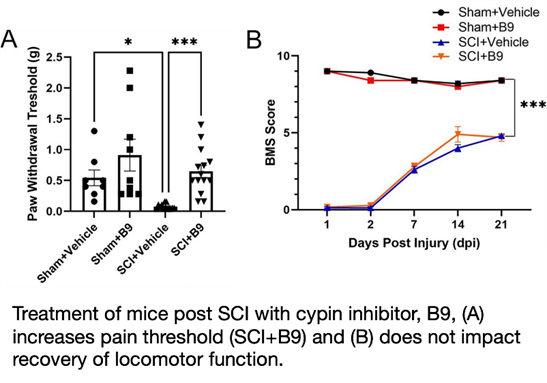

Invention Summary:
Spinal cord injury (SCI) and its associated chronic pain can significantly diminish quality of life. While therapies like spinal cord stimulation and neuromodulation offer potential pain relief, current pharmacological options fall short, often proving ineffective, short-lived, and laden with side effects, including addiction. To improve long-term outcomes and address these limitations, the development of novel therapeutics specifically targeting post-SCI pain is imperative.
Rutgers researchers have identified a compound (B9), which inhibits cypin, a GDA that is expressed in neurons and is implicated in SCI-induced pain. Mice treated with B9 at 1, 3, and 7-days post-SCI results in long-lasting reduction of mechanical pain sensitivity. Treatment with B9 does not impact recovery of locomotor function or interfere with the natural healing process. These findings could lead to an effective, long-term pharmacological treatment of SCI-induced pain and people suffering from pain post-SCI. .
Market Applications:
- Small molecule therapy for SCI-induced pain
- GDA/cypin -new drug target for any type of pain including SCI-induced neuropathic pain.
- Hyperuricemia and gout
Advantages:
- Pharmacological treatment
- Does not prevent recovery of locomotor function
- No exacerbation of SCI lesion
Intellectual Property & Development Status: Provisional filed, patent pending. Available for licensing and/or research collaboration. For any business development and other collaborative partnerships, contact: marketingbd@research.rutgers.edu